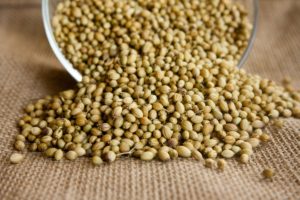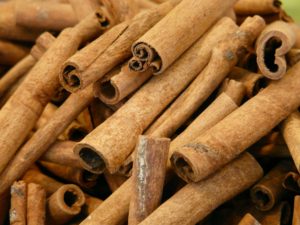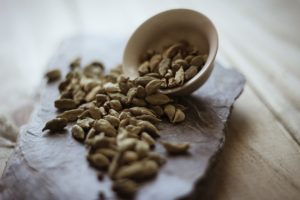Simply put, without botanicals, there would be no gin. Needless to say, its importance can’t be underestimated but what exactly are they?
Botanicals are broadly defined as a “substance obtained from a plant and used typically in medicinal or cosmetic products.” This list includes but is not limited to, fruits, seeds, peels, herbs, and roots. While botanicals still remain true to its roots (pardon the pun) in its medicinal uses (it’s still widely used in the pharmaceutical industry and in herbal medicine), it is most known by consumers as the key ingredient in gin (and also tea!). There are thousands of botanicals so how do you know which are the best botanicals for your gin? And how can you tell the quality of the botanical you have chosen? Keep on reading to find out more.
The History of Botanicals in Gin
It should come as no surprise that the use of botanicals in gin has a medicinal back story. Gin’s predecessor, the Dutch drink jenever/genever (Dutch for “juniper”) was used as medicine back in the 1500s. Jenever is made from distilling malt wine or malt spirit with juniper and other herbs, seeds and spices. The juniper berries were suspected to have the medicinal benefits. In 1606, genever was no longer considered as medicine and was classified by the Dutch Tax authorities as an alcoholic drink. Soon after, genever made its way across the sea to Britain and evolved into what we now know as gin.
As we go through the list of all the gin botanicals, you may notice that it’s not the only botanical with such properties.
(At this point we feel the need to disclose that while the botanicals themselves might be medically beneficial, its use in gin does not make gin a form of medicine. Please drink responsibly).
How Are Botanicals infused in Gin?
There are two essential components to gin: the botanicals and the neutral spirit. Most distiller likes to use grain neutral spirits (GNS) as their base of choice but there are plenty of other neutral spirits options to choose from. There are two main methods are used to infuse the flavours of the botanicals into the neutral alcohol to make gin.
The first method is called steeping, or steep and boil. The neutral spirit is placed in a pot still with the botanicals and steeped for up to 48 hours (or even longer if the distiller chooses!), the liquid is distilled and then diluted down to bottling strength. Some distillers have been known to individually steep each botanical and then combine each one in one final distillation, this process is called individual botanical distillation.
Vapour infusion is another popular method for botanical infusion. In this instance, the botanicals never come into contact with the neutral spirit. The botanicals are placed in a basket above the spirit. When the spirit is boiled, its vapour rises and infuses with the botanicals. The infused vapour is cooled and condenses into a liquid which is then reduced to bottling strength. The end result is a gin with a mellower botanical flavour.
Top Gin botanicals
There are thousands of botanicals that gin distillers can use, which can be both lucky and unlucky! After all, the more options you have the harder it can be to choose but the more you can do to create a truly unique gin.
Gin flavours can be broadly categorised into four aroma and flavour groups: sweet, floral, citrus and spicy. Our list of top gin botanicals is only a small glimpse into the world of gin botanicals, you can see a more comprehensive list on our botanicals brochure.
Juniper Berries (Juniperus communis)
Flavour profile: Bittersweet, spicy, fragrant, piney and fruity.
Juniper berries are what makes gin, gin! By law, gin is a juniper flavoured spirit. Juniper berries grow in shrubs in across the northern hemisphere in Europe, North America, as well as Southwest Asia. There are between 50-70 species of the berry, however, only a few of them are good enough for gin. A lot of them are bitter and a small handful is poisonous. Juniper berries from Tuscany, the Scottish Highlands and Macedonia are considered as some of the best.
Coriander Seeds (Coriandrum sativum)

Flavour profile: spicy, mellow, and citrus-y
Coriander seeds are the second most popular botanical in gin. Coriander seeds grow in Southern Europe, North Africa and South-West Asia, and the flavour of the seeds can be quite different depending on where it’s from.
Distillers can use the seeds whole, roast or crush them to slightly change its flavour. A gin with a heavy coriander presence can be divisive to drinkers. Those who love it will sing endless praises to its flavour while those who find the taste of coriander akin to soap, will throw the bottle out the window before you can utter “G&T”.
Angelica Root (Angelica archangelica)
Flavour profile: woody, herbal, nutty, smooth and mellow.
Angelica root acts as a fixative for the different and more volatile flavours. Holding it all together to create a harmonious liquid. It can be found in France, Germany, Flanders, and Romania and unlike coriander seeds or juniper berries, the provenance of the root doesn’t have a real impact on its quality, good news for distillers! One way distillers can play around with flavour is by swapping out Angelica root for angelica seeds which have more floral notes.
Citrus Peels
Flavour profile: fresh, juicy, strong.
Lemon peel (Citrus limonum), orange peel (Citrus aurantium) and grapefruit peel (Citrus x paradisi) give gin a delightfully zingy and fruity flavour, providing a nice contrast to the spice and heavy juniper notes. Citrus peels are used over the fruit flesh because the skin has a higher proportion of the flavoursome oils. Whilst lemon peel and grapefruit peel are almost always used in its dried form. Distillers can use dried orange peel or fresh orange peel in their gin botanical mix.
Citrus peels are commonly sourced in Spain and each peel type has slight flavour variations, it’s up to the distillers to select the citrus peel that best interacts with the other botanicals in the mix. Lemon peel has a crisp and slightly bitter note to it, orange peels can both be sweet or bitter depending on the type of orange used, and grapefruit peel has a more chameleon-Esque citrus flavour.
Some gin distillers, especially in Japan have substituted the lemon and orange peel for the Yuzu fruit (yuzu is one of the key botanicals in Nikka Coffey Gin). Native to Japan, China and Korea, yuzu has a punchy citrus flavour that is a cross between a lemon and grapefruit.
Orris Root (Rhizoma iridis)
Flavour profile: Earthy, woody, floral, grassy
Orris root, sometimes referred to as Iris root, is the bulb of the iris flower gives the root a strong floral fragrance. Similar to angelica root, orris root acts as a fixative for the different flavours in gin. Before orris root can be used in gin it first has to be dried for 2-5 years and then grounded into a powder. Besides its use in gin, the strong floral fragrances make it ideal for perfumes (rumour has it, the famed Chanel No.5 perfume has a high proportion of orris root).
Cassia Bark and Cinnamon

Flavour profile: Warming spice
Part of the cinnamon family, Cassia bark (also known as Chinese cinnamon) brings a nice gentle warmth to any gin. Cinnamon and cassia can be found across Asia in countries like Sri Lanka, China and Vietnam. There are subtle differences between the two, cassia has a gentler but sweeter flavour compared to Cinnamon. Buyers of cinnamon, pay careful attention to the product being sold. It is not uncommon for cassia to be mis-sold as true cinnamon, you can pay close attention to the Latin name to discover which product is which. True cinnamon goes by Cinnamomum verum, and cassia is Cinnamomum cassia.
Liquorice (Glycyrrhiza glabra)
Flavour profile: Sweet, spicy, and fiery similar to star anise and fennel.
Historically, liquorice root (sometimes spelt “licorice”) was traditionally used as a sweetener in gin when sugar was too expensive. Adding liquorice to gin gives the spirit viscosity and ( a pleasant) oiliness. For those who are fans of liquorice sweets and are keen to find the gin counterpart, we must warn you that the flavour liquorice root used in gin is not at all the same as the sweet.
Cardamom Pods

Flavour profile: Spicy, citrus-y with a light floral note
Part of the ginger family, cardamom pods have a distinctive taste that is easily identifiable in gin. Native to India and Indonesia but also found in Guatemala, Tanzania, and Indochina (Cambodia, Laos and Vietnam). Cardamom is available in the green (Elettaria cardamomum) and black variety (Amomum subulatum) although green cardamom is more popular in gin production because it has a more delicate flavour.
Sloe Berries (Prunus spinose)
Sloe berries are used to make, you guessed it, sloe gin! A ruby red gin-based liqueur, made from the infusion on sloe berries with gin and sugar. While the end result is typically sweeter than your average gin spirit, the sloe berries themselves are very sour. The sloe berries grow on the blackthorn bush, which can be found in Europe, Western Asia, New Zealand, some part of North America.
How Many Botanicals are Used in Gin?
There is no rule when it comes to the number of botanicals required in gin. It is completely up to the distiller although most quality gin use 6-12 different types of botanicals. The only rule when it comes to gin flavour is that it has to predominately taste of juniper. Unlike the laws of whisky/whiskey, this relatively loose definition can both be a blessing and a curse. Distillers can get creative with the botanicals to create a unique gin but at what point do we cross the line and the gin no longer has a juniper-led flavour? It’s a fine line for gin distillers all around.
What you need to know about buying Botanicals
Distillers looking to buy bulk botanicals for their gin or any other spirit should ensure that the botanicals have been stored appropriately. The majority botanicals used for distilling are stored in its dried form, which can store its flavours for years and still remain in good quality. However, great care has to be taken to maintain its quality, even the smallest issue can lead to some serious product loss. For example, a single moth in a batch can ruin a complete stock.
The risk of contamination is highest during transportation, which is why any incoming stock into warehouses should be checked and tested (fumigation chambers are often used for this) and any outgoing botanicals must be packaged correctly.
Ethimex can supply your distillery with the highest quality botanicals, our botanicals are sourced from around the globe and each batch of botanicals are undergone a regular quality check. We can also supply you with organic botanicals (organic certified by the soil association). Alternatively, if you are looking for a gin without the extra step of infusing your own botanicals, Ethimex can also supply you with bulk gin. Contact us today for more information.


